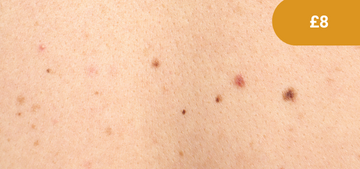Overview of Skin Cancer
Awarded with
1 CPD HOURS

Skin Cancer CPD Module
As healthcare professionals, your expertise is vital in diagnosing and managing skin cancer, a condition that can have life-changing consequences. Our Skin Cancer CPD Module is designed to empower you with the knowledge and skills needed to excel in this critical area of healthcare.
Why Choose Our Skin Cancer CPD Module?
Our comprehensive module covers the two major groups: cutaneous melanoma and non-melanoma skin cancer (NMSC). Gain a deep understanding of these malignancies and learn to differentiate, diagnose, and manage them effectively.
In the 21st century, melanoma remains a potentially fatal malignancy, responsible for 75% of skin cancer-related deaths. While the incidence of many tumour types is declining, melanoma is on the rise. Stay at the forefront of your field by keeping up-to-date with the latest information and treatment approaches.
Upon successful completion of the module, with a minimum pass rate of 60%, you'll receive a downloadable 1-hour CPD Certificate, which you can print or upload to your CPD portfolio.
Aims & Objectives
This module is composed of 10 assessment questions on skin cancer. On successful completion of this module, you will gain an improved understanding of:
Differing clinical presentations of skin cancers
The need for diagnosis of pigmented lesions without delay when a diagnosis of melanoma is suspected
Appropriate margins needed for clearance in primary excision and wider local excisions to prevent incomplete tumour removal and recurrence
Staging for melanoma and SCC
High risk sites for SCC and BCC, and the effect on prognosis
Our Dermatology CPD Course
Dermatology CPD Course
10 Modules Only £20
Why StudyPRN?

Online Access
Available all year round with 24/7 online access and unlimited resits, you'll be able to learn around your busy schedule and get to grips with your CPD modules whenever you'd like - all you need is an internet connection.

Quality Assured
Our CPD modules are written and edited by medical experts within their specialist fields, who have pedigrees in postgraduate education. Questions are reviewed on a regular basis to ensure that they remain relevant and up-to-date with new guidelines.

Boosting Clinical Knowledge
As a healthcare professional, it's important for you to continuously expand on your clinical knowledge, skills and abilities. Our CPD modules will help you achieve this by providing you with a full explanation of answers, further reading, and the option to reflect using our online notes system.
